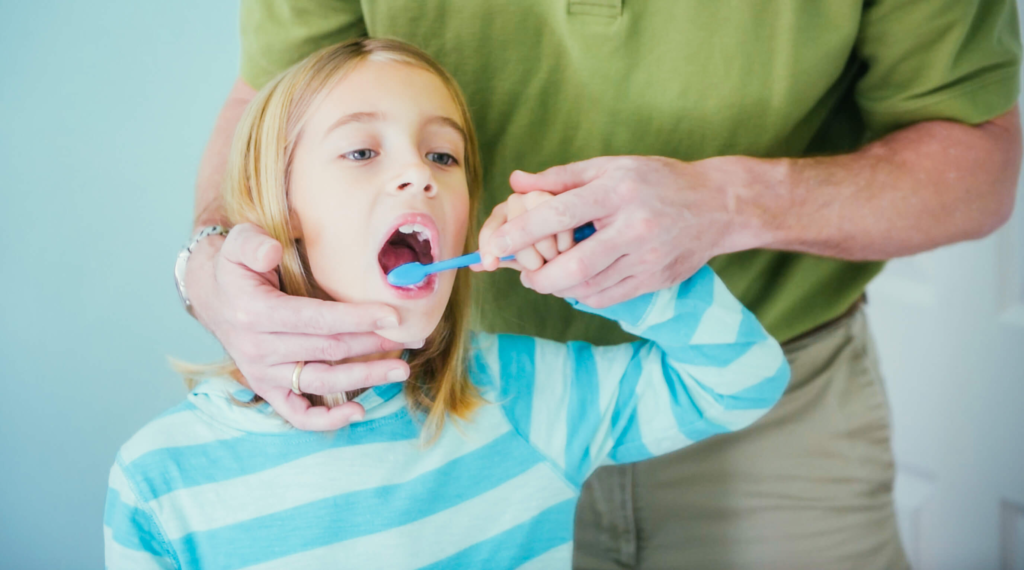Looking after Your Child’s Dental Health

Starting good oral habits early is essential. But how do you start it right? How do I know what is the best toothpaste to use? How to prevent tooth decay?
There is just so much confusion. Hence we decided to iron it out with some tips and guidelines to help you.
Age: up to 12 months of age

- Even before your baby starts teething, run a clean, damp washcloth over the gums to clear away harmful bacteria.
- When your baby starts teething, brush them with an infant toothbrush. Use water and a tiny bit of fluoride toothpaste (about the size of a grain of rice).
- Fluoride hardens the tooth enamel (thin covering over the tooth). This covering helps to ward off the most common oral issue in kids— dental cavities.
- Sugars from juice, formula, or milk that stay on a baby’s teeth for hours can eat away at the enamel (the layer of the tooth that protects against tooth decay). Hence, avoid putting a baby to sleep with a bottle.
- Tooth decay happens when teeth get discoloured, pocked, and pitted. Cavities start forming and teeth may need to be pulled out.
- When kids are 6 months old, they can start using a sippy cup (with a straw or hard spout). This helps prevent liquid from pooling around a child’s teeth.
- By a child’s first birthday, they’ll have the motor skills and coordination to use a cup to drink on their own.
Age: 1 – 2 years’ old

- At this age, the child already knows how to spit after brushing their teeth. Avoid giving your child water to swish and spit because this can make swallowing toothpaste more likely.
- Parents can start flossing their child’s teeth once most of their baby teeth has grown. Flossing helps remove food particles and debris which can contribute to cavities and tooth decay.
- Try to take your child for a first dental visit.
- Check for signs of early childhood tooth decay once a month. Lift your child’s upper lip and look for chalky-white or brown spots on the teeth or along the gum line. If you see any, take your child to a dental professional as soon as possible
Age: 3-4 years’ old

- Teach your child “2 for 2,” which means brushing twice a day for 2 minutes each time.
- Kids at this age should use only a pea-sized amount of fluoride toothpaste.
- Always supervise kids while brushing as they’re likely to swallow toothpaste.
For all ages

- Rinse toothbrushes thoroughly after brushing and make sure that the child’s toothbrush is not touching another person’s toothbrush.
- Replace child’s toothbrush every 3 months or when the bristles become flattened.
- Offer water between meals. Avoid offering candy, dried fruit (including raisins) and sugared drinks or juices.
- Try to take your child for regular dental visits (every 6 months or once a year).
- If your child continues to suck their thumb as permanent teeth begin to appear, talk to your dentist on how to stop this habit.
Reference:
1. Children’s Oral Health, Centre’s for Disease Control and Prevention (CDC).
2. Early Childhood Oral Health Guidelines for Child Health Professionals, 3rd Edition, New South Wales (NSW) Government, Australia.








I am currently writing a paper that is very related to your content. I read your article and I have some questions. I would like to ask you. Can you answer me? I’ll keep an eye out for your reply. 20bet